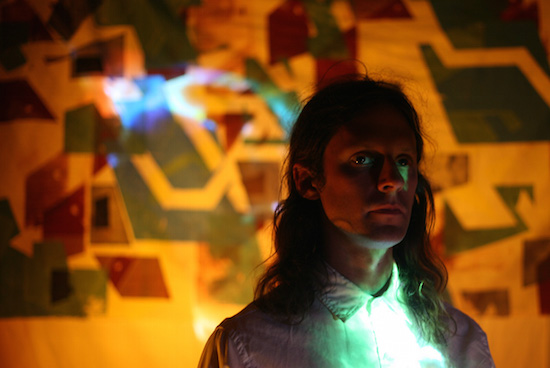Undying Color is the new album from Jaime Fennelly’s Mind Over Mirrors project, marking his sixth long-player. It’s out a week today and ahead of its release, you can take an exclusive full listen of it above.
The album sees Fennelly team up with a number of collaborators: Haley Fohr of Circuit des Yeux, Janet Beveridge Bean of Eleventh Dream Day, Califone’s Jim Becker (Califone) and Jon Mueller of Death Blues. Across seven tracks, Fennelly delivers striking, life-affirming folk with electronics experimentations.
A large part of the album’s recording process came about across two weeks in the Driftless Region of Wisconsin with Fennelly retreating to a cabin on Red Clover Ranch, about twenty miles east of the Mississippi River, and locking himself away to work on the album.
He tells us about that time and the influence of those surroundings on the album, as well as his work with his collaborators on the new LP, in the interview below.
The new album features a number of collaborations. How did you come into contact with those featured on the album?
Jaime Fennelly: In 2010 I had moved from the San Juan Islands in Washington State to Chicago. During the first several Mind Over Mirrors albums I was really focusing on solo work to reflect upon the preceding three years I had spent on the island. At a certain point I felt like it was important to begin being present with where I currently was, Chicago, and at that time I was also there long enough to have met a number of musicians who I felt would be great additions to my sound world. It was a very gradual process however, first meeting Haley [Fohr, of Circuit des Yeux] in Austin, Texas where we were both playing at a festival and beginning to work together to complete The Voice Calling that following Fall.
Haley worked with me in Mind Over Mirrors for about six months before I began thinking about how to continue opening up the instrumentation of the group to reflect other sounds I was hearing, albeit, abstractly in the music I was making on my own, but hadn’t yet brought out to the foreground. I was introduced to Jim Becker through Scott Tuma and we played together with Tuma a couple times around town. I was familiar with Jon’s work for well over a decade and upon moving to Chicago we began sharing some bills together and I had the opportunity to experience the visceral power of his solo performances. In early 2015 he invited me to perform in the ensemble version of his multi-part/album/sensory experience Death Blues and it was through that that we began working together. I met Janet [Beveridge Bean] through JR Robinson of Wrekmeister Harmonies and when I began thinking about expanding the vocal component of what Haley and I were working on, and being able to double up on drum parts that Jon had come up with for Undying Color, Janet was a very obvious first choice since she is such a phenomenal singer, lyrical writer and drummer.
You spent two weeks alone working on this album. Why did you decide to pull the album together in this short timespan?
JF: I had actually started working on the album in my home studio in April 2015 and ended in June of 2016. The weeks up in the Driftless at the turn of the year was a very focused period of time and much of my own recorded material came from those sessions, but the time preceding definitely fed into those Driftless sessions, including a duo tour with Haley in Fall of 2015 which is when the piece ‘Splintering’ was developed and performed throughout that tour. I also had another tour in March 2016 opening for Tortoise for two weeks and that was really informative before I brought in the full band to record their parts.
How did your surroundings on Red Clover Ranch influence the recording of this album?
JF: Natural environments have played a big inspiration on all of my albums, certainly rooted in my years living on the island in the Pacific Northwest, and taking myself out of my current day-to-day urban life, putting myself into a more isolated environment often allows me to tap into a different sense of time. It’s not seamless and often it actually is quite challenging to spend concentrated periods of time trying to make work by myself, but I like the pace of the days and having uninterrupted focus and being able to take hikes easily to clean out the brain cobwebs seems to be a good working methodology so far.
Was there a particular concept you had in mind when beginning work on this album?
JF: I wouldn’t say that there was a specific “concept” per se when I began working on it, but I knew from the beginning (April 2015) who I wanted to be involved in the album and everything aligned to allow that to happen. My uncle who was quite formative in my childhood also passed away in May of 2015, which I was present for along with his immediate family, and a meditation on that experience, of watching life being pulled out of someone was of course sad and tragic, but also quite powerful as a human experience to witness. The idea of Undying Color is a direct reference to that.


